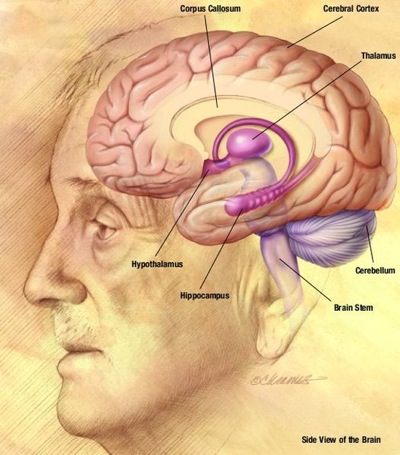
The Brain
last authored: Sept 2009, David LaPierre
Introduction
The brain is the most complicated structure in the universe, with each cubic millimeter of cerebral cortex containing approximately one billion synapses (Alonso-Nanclares et al, 2008).
Neurons communicate with one another by means of long protoplasmic fibers called axons, which carry trains of signal pulses called action potentials to distant parts of the brain or body and target them to specific recipient cells.
The most important biological function of the brain is to generate behaviors that ensure survival. Brains control behavior either by activating muscles, or by causing secretion of chemicals such as hormones.
Anatomy

Please select the structures at left for more information about the brain and its structural composition.
Other important structures include basal ganglia, limbic system, and ventricles.
The brain is covered by meninges and supplied by vasculature.
Brain development occurs as a set of intricate sequences as neurons differentiate, migrate, and form synapses. This process occurs throughout life.
Function
Cell Biology
Clinical Vignette 1
A person takes this treatment for this reason due to concerns re: condition
This happens.
How do you respond?
Clinical Vignette 2
Additional Resources
Topic Development
created:
authors:
editors:
reviewers:
